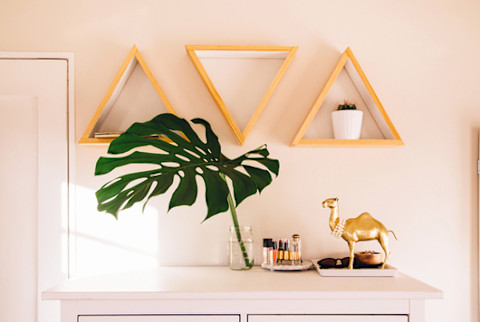
Marian Waters was unlike any friend I'd had before.
I was a college student at the time working as a barista, and one fateful day I waited on Marian. She ordered a latte and introduced herself as the girl who sat behind me in neuropsychology class. I asked about her success on the last test, and upon leaving, she gave me her number and suggested that we take a run in the park one morning. I agreed, and a few days later we set a 6 a.m. start.
The unexpected secret to being free-spirited, carefree, and vibrant.
It wasn't until she invited me over for breakfast that I realized why Marian was able to be so carefree, vibrant, and willing to share her spirit of adventure. Her home was a tiny, somewhat minimalist sanctuary. Filled with plants, pillows, bright colors, succulents, simple pictures, and gentle scents, her space wasn't fancy, but it was designed with intention. She took time to set meaningful objects in common places where they would be seen and used, refreshed, or replaced for something new.
She clearly saw me marveling at her space, as she said, "My mother and father taught me that you have to create a physical spot for your mind and body to go to when you are under stress; this way, your mind knows stress is not an endless abyss." She further explained that her father was a neuroscientist, and he researched the idea that the mind prefers to be calm when given the chance, but it needs somewhere to start.
"My parents explained that images and feelings can be self-altered with awareness and then used as comfort to calm the body." So instead of being triggered by your environment with stacks of papers, piles of clothes, dirty dishes, and the like—we have the power to design it to induce a state of relaxation.
Here's how to use your space to calm your mind and body.
I was fascinated by the concept. It seemed so commonplace but was actually the opposite. Many of us fall into a repetitive cycle of incoming stress and then react with an unrealistic expectation to simply remain calm. It was a profound realization to understand how the home environment has the power to stop or perpetuate stress patterns.
I learned from Marian there is a simple solution to forming a mental association with the environmental cue to relax. This enables us to look at stress as temporary, knowing that we can choose not to be stressed in the present moment.
For me, design is an important part of de-stressing, as is ritual. In order to create your own intentional sanctuary, simply assign a few small corners, surfaces, nooks, or areas of your home to be for different types of relaxation. Then the fun part: Participate in them through regular ritual. Here are some ideas:
1. Plug in your music.
Music is therapeutic. Gather a playlist and listen to a couple of favorites at the beginning or end of your day. It does not necessarily have to be slow; uplifting music is a different kind of relaxing for many.
2. Doodle.
You do not have to be an artist to benefit from doodling, drawing, or even coloring. It's nice to balance out the day with a different part of your brain. Draw freehand, try a bullet journal, write a letter, or even jot three sentences a day in gratitude. Do this in a space designated for creativity, uncoupled from the reminders of what your day was and what tomorrow will bring.
3. Light a nontoxic candle.
Aromatherapy is nothing new, but the benefits of relaxing scents are palpable. It does not need to be an elaborate setup to be an effective one. If you don't have a candle on hand, a simple small simmering pot with a few drops of peppermint oil will do the trick, as will an essential oil diffuser.
4. Play mindfully.
Fidget spinners hit the nail on the head for lighthearted attention seekers, but even a puzzle will work. Set aside a small table and put out a puzzle; whether you finish it or not, change it once a week.
5. Keep fresh flowers or plants in the bathroom.
Bring the outside in! The light and brightness of flowers can reset the atmosphere and vary the "landscape" of your home. Plants in a bathroom with enough light will thrive because bathrooms tend to be a bit more humid.
6. Schedule a weekly friend date.
In short, they need you and you need them. Even if you schedule for just a half-hour, the break, the consistency, and the comfort will reset you for the week.
7. Visual aids.
Create a vision board. Visual and kinesthetic learners would do well with a vision board, as it combines the double tactic of seeing and feeling what you are setting out to accomplish. Having this in your home as an intentional reminder of your goals and changing it up as they evolve can be incredibly helpful.
8. Track your meditations.
We are all familiar with meditating or the idea of it, but how many of us actually do it? Place a hanging calendar above a soft colorful pillow and put a sticker on days you're able to sit. It's fun to keep track and an intentional reminder to maintain the practice.
9. Designate a screen-free room.
The bedroom should be as screen-free as possible. Bedrooms are for sleeping, rest, and relaxation. If you can designate the bedroom for just rest, awesome. If not, divide up the room into sections and allow one section for total relaxation mode.
Bridging the physical and mental world with cues to relax will have you feeling rested in your sanctuary so you can approach the world with ease.
While you're at it, here's a two-minute yoga sequence to beat stress, plus a lesson on the body part that controls it.
